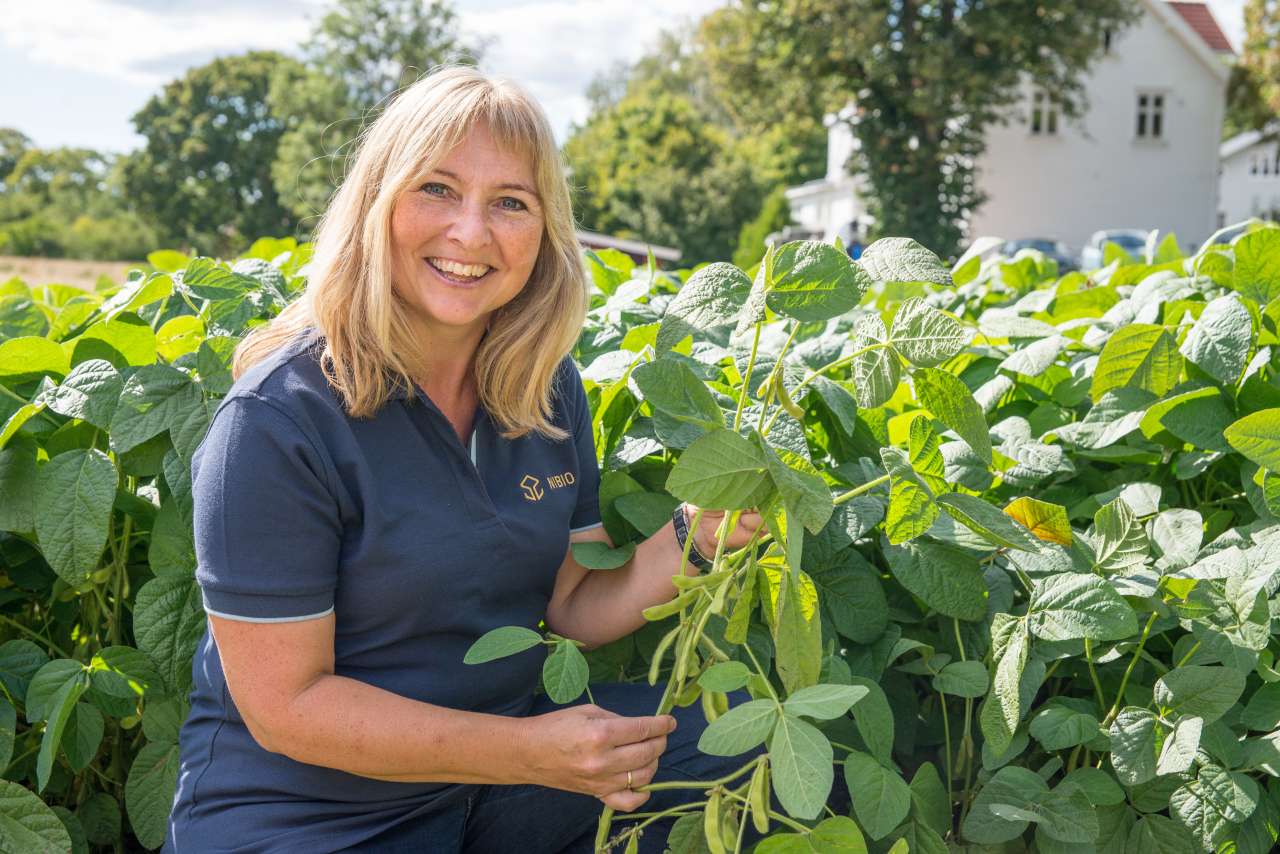Belief in Norwegian soy production

Photo: Anette Tjomsland.
With soy production spreading further and further north, researchers are now looking into the possibilities for edamame cultivation in Norway.
“Here in Norway we use significant amounts of imported soy for livestock and fish feed,” says Ingunn Vågen, research scientist at NIBIO Landvik. Given the soy varieties and growing conditions we have today, it is currently unrealistic for commercial farms to grow soy to maturation in Norway. In the longer term, we may be able to achieve this in our most climatically-favorable farming areas.
When it comes to fresh, immature soybeans (edamame), however, Vågen is more optimistic. Edamame is the vegetable form of soy, and can be eaten as a snack, as an accompaniment to sushi or in salads.
“My belief is that it should be possible to cultivate edamame beans for food consumption in Norway,” she says.
Researchers from NIBIO and NMBU are working with vegetable soy as part of FoodProFuture, a larger project focused on plant protein. There are numerous potential challenges that need to be studied, including which varieties of soy will grow in Nordic conditions, which production and harvesting technologies to use, and the market and economy. Despite these challenges, Vågen is optimistic.
“It looks more promising than we expected. In the first year we didn’t know if they would grow at all, but the plants are doing well and have had very few diseases. And they taste incredible! The biggest challenge is finding good varieties of soy suited to a Nordic climate. We also need more information to be able to plan the harvest.”
“In the long term we hope to turn our focus to mature soy,” says Vågen. “Varieties suited to our short growing season would be the main challenge in that case as well. There is an increasing interest in breeding varieties of soy that can be grown in cold climates, which could bring new opportunities to Norway. In fact, after this year’s warm summer, fully mature soy was harvested from a small plot in Grimstad.”
Though the possibilities are exciting, Vågen admits that it is unlikely that soy production will ever become a large industry in Norway. She urges us not to forget our traditional legumes— broad beans and peas — which we could be making better use of, as a food source as well as for other purposes.
Contacts

Contacts

